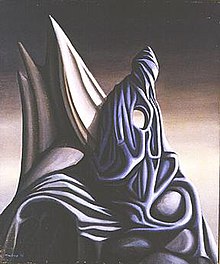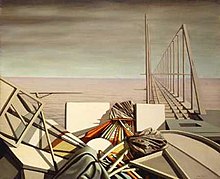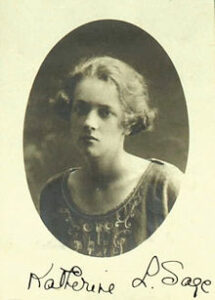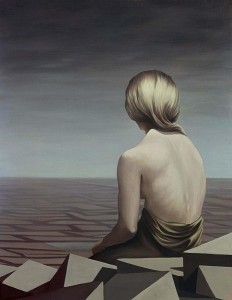Dear Zazie, Here is today’s Lovers’ Chronicle from Mac Tag to his muse. Follow us on twitter @cowboycoleridge. Hope all is well Z! What voyage are you on? Rhett
The Lovers’ Chronicle
Dear Muse,
© copyright 2020 mac tag/cowboy coleridge all rights reserved
imagine
were we to meet
and take our pleasure
leisurely, you and i
and make for us
through all that comes
hold the same, your eyes
when they, in their like wise,
through smiles and tears,
there all is naught amiss
© copyright 2019 mac tag/cowboy coleridge all rights reserved
you and me
each other
in other forms
a reason, a purpose,
nothin’ else mattered
only content when servin’
some sort of inner sense
pursuin’ potentialities
for a better understandin’
you were the only one
who ever understood
as another June breeze
billows through my curtains
i pick up my well worn copy
of Les fleurs du mal
i still feel
un nouveau frisson
even without you
it still hurts
but now
that i am where
i should be
i need not
shy away
from the sorrow
it will not
consume me
rather it is there,
an old friend,
to remind me
i am still standin’
and i remain
devoted to you
and everything
we were
© copyright 2018 mac tag/cowboy coleridge all rights reserved
remember how
every year on this day
we would read
Les fleurs du mal
to each other
on that big bed
in the middle of the room,
windows open, June breeze
billowin’ the curtains
i can still hear your voice
smell your perfume
see your eyes
remember how we would joke
if we did not have each other
we could write a poem called
Les everything du mal
well, workin’ on it
© copyright 2017 mac tag/cowboy Coleridge all rights reserved
On this day in 1857, one of my favorite French poets, Charles Baudelaire published Les Fleurs du mal (The Flowers of Evil). The subject matter of these poems deals with themes relating to decadence and eroticism and Baudelaire and the publisher were prosecuted under the regime of the Second Empire as an outrage aux bonnes mœurs (“an insult to public decency”). These poems are dark yet beautiful and more often than not, fit my mood. An excerpt:
| L’Invitation au voyage Mon enfant, ma soeur, Songe à la douceur D’aller là-bas vivre ensemble! Aimer à loisir, Aimer et mourir Au pays qui te ressemble! Les soleils mouillés De ces ciels brouillés Pour mon esprit ont les charmes Si mystérieux De tes traîtres yeux, Brillant à travers leurs larmes.Là, tout n’est qu’ordre et beauté, Luxe, calme, et volupté. |
Invitation to the Voyage Imagine, ma petite, Dear sister mine, how sweet Were we to go and take our pleasure Leisurely, you and I— To lie, to love, to die Off in that land made to your measure! A land whose suns’ moist rays, Through the skies’ misty haze, Hold quite the same dark charms for me As do your scheming eyes When they, in their like wise, Shine through your tears, perfidiously.There all is order, naught amiss: Comfort and beauty, calm and bliss. |
And today is the birthday of Kay Sage (Katherine Linn Sage; Albany, New York; June 25, 1898 – January 8, 1963 Woodbury, Connecticut); Surrealist artist and poet. She was active between 1936-1963. A member of the Golden Age and Post-War periods of surrealism, she is mostly recognized for her artistic works, which typically contain themes of an architectural nature.
Sage met a young Italian nobleman, Prince Ranieri di San Faustino, in Rome around 1923 and fell in love with him, believing at first, as she wrote to a friend in 1924, that he was “me in another form.” They married on March 30, 1925. For ten years the couple lived the idle life of upper-class Italians, which Sage later described as “a stagnant swamp.” She looked back on that time as years that she simply “threw away to the crows. No reason, no purpose, nothing.” Her husband was content with their lifestyle, but Sage was not: as she wrote in her autobiography, China Eggs, “Some sort of inner sense in me was reserving my potentialities for something better and more constructive.” Sage left her husband in 1935 with plans to build an independent life as an artist. They obtained a papal annulment of their marriage several years later. Sage moved to Paris in March 1937.
Several stories are told about Sage’s meeting with her future husband, Surrealist artist Yves Tanguy. One came from Greek poet Nicolas Calas, who recalled that he and Tanguy accompanied Surrealist leader André Breton to the Surindépendants exhibit and were impressed enough by Sage’s paintings to seek her out. Tanguy at the time was married to Jeannette Ducroq, but they were separated, and he and Sage immediately fell in love.
Germany invaded Poland in September 1939, beginning World War II, and Sage sailed back to the United States a month later. She immediately set up plans to help the Surrealists immigrate as well and establish themselves in the new country by means of art exhibitions—starting with Tanguy, who joined her in New York City in November. Sage and Tanguy married on August 17, 1940, in Reno, Nevada, after he obtained a final divorce from duCroq. In 1946 they purchased the farm and moved to Woodbury permanently. They converted a barn on the farm into his-and-hers studios, separated by a partition with a door. Their home was decorated with numerous pieces of Surrealist art and a variety of unusual objects, including a stuffed raven in a cage and an Eskimo mask.
Sage was devastated by Tanguy’s death. “Yves was my only friend who understood everything,” she wrote to Jehan Mayoux, an old friend of Tanguy’s, about a month after Tanguy’s fatal stroke. Sage barely did any new paintings after Tanguy died, partly because of her depression and partly because of her decreasing eyesight due to cataracts. Instead, she devoted her time to two projects: preserving Tanguy’s reputation through retrospective shows and a complete catalogue of his work, and writing poetry, mostly in the slangy French she had learned in her youth and spoken with Tanguy. With the help of longtime friend Marcel Duhamel—and her own subsidies to cover most of the printing costs—Sage arranged for a book of this poetry, Demain, Monsieur Silber, to be published in France in June 1957.
Sage wrote in a journal in August 1961, “I have said all that I have to say. There is nothing left for me to do but scream.” On January 8, 1963, she put a fatal bullet through her heart. Following instructions in her will, Pierre Matisse buried urns containing Sage’s and Tanguy’s ashes in the water off the coast of Tanguy’s native Brittany in 1964.




“I have said all that I have to say.
There is nothing left for me to do but scream.”
“I feel unexpectedly
delicious fragrance
a perfume full of memories
of youth, of spring
which seems to follow my smile
the motion of my hands.
I look in vain
I cannot find it
what can it be?…”
Mac Tag
Oh someone, I run through names, thinking someone: hear me, take me to your heart, be warm and let me cry and cry and cry.
Sylvia Plath
The only way to atone for being occasionally a little over-dressed is by being always absolutely over-educated.
Oscar Wilde
Let it rain let it pour I ain’t gonna study war no more
If you got a mind to you can sing
If you got a body baby shake that thing
Ray Wylie Hubbard
our love of each other was like two long shadows kissing without hope of reality.
anaïs nin
It was comforting to know I had fallen and could fall no farther.
Sylvia Plath
So come, and slowly we will walk through green gardens and marvel at this strange and sweet world.
Sylvia Plath
I am almost afraid he was a dream, conjured up in a moment of wishful thinking.
Sylvia Plath
Heart! O heart! if she’d but turn her head,
You’d know the folly of being comforted
W.B. Yeats



27/06/2012 at 10:11 pm Permalink
hey this blog is wonderful, following you to see more posts.http://www.automodelo.net